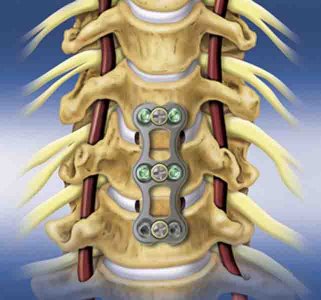Read about Microdiscectomy Recovery Time, Success Rate, Complications, Cost.
A microdiscectomy or microdecompression spine surgery involves removing a tiny piece of bone over the nerve root, or disc material, in order to relieve pain caused by neural impingement (or essentially a pinched nerve). The repetitive motions of golfers can cause back injuries; likewise, someone with a herniated lumbar disc will undergo a microdiscectomy.
During a microdiscectomy, surgeons create a small incision in the lower back, after which the back muscles are lifted off the arch of the spine. The surgeon then removes a membrane over the nerve roots, visible through special glasses. The nerve root is then moved over, giving the doctor the chance to remove the disc material. It’s a surgery that can be done in one day, with no requirement for the patient to stay in the hospital overnight. Pain is often relieved immediately after the surgery, and patients are able to go back to their normal lives shortly after.
The most common reason to have a microdiscectomy is to alleviate nerve pain that has not resolved within a reasonable time period. Disc surgery can provide relief for pain in the buttock area and/or pain that runs down the leg. Many people would like to be more active than their pain allows; this situation often persuades them to have surgery. Without surgery, the muscle usually regains strength on its own over time. However, if the weakness is profound or progressive, many surgeons feel that surgery might be helpful.

Microdiscectomy Recovery Time, Success Rate, Complications, Cost
Let’s review about Microdiscectomy Recovery Time, Success Rate, Complications, Cost.
Recovery Time
The recovery time is shorter than other, more invasive procedures. Most patients are able to go home the same day or early the next day after surgery. Before patients go home, physical therapists and occupational therapists work with patients and instruct them on proper techniques of getting in and out of bed and walking independently.
Patients are instructed to avoid bending at the waist, lifting (more than five pounds), and twisting in the early postoperative period (first 2-4 weeks) to avoid a strain injury or recurrent disc injury. Patients should try to avoid sitting in the same position for more than 45-60 minutes in the first few weeks after surgery. After sitting for 45-60 minutes, patients should get up and stretch or walk for a little bit, then sit down again if desired.
Success Rate
The success rate for microdiscectomy spine surgery is approximately 90% to 95%, although 5% to 10% of patients will develop a recurrent disc herniation at some point in the future.A microdiscectomy is 85 to 90% successful in relieving pain in the leg and/or buttocks.
Pain relief is typically quite rapid, although in specific instances, it may take six to eight weeks for the nerve to completely calm down. If a nerve has been pinched for a long time, the success rate is rarely 100% as there is usually some residual mild tingling, weakness, or pain, all of which are usually fairly tolerable.
According to a study in the Journal of Neurosurgery, outpatient microdiscectomy is 75 to 80 percent effective at eliminating sciatica pain caused by disc herniation. Sciatica is a pain condition caused by compression of the spinal nerve. This compression is most often the result of a herniated lumbar disc.
A recurrent disc herniation may occur directly after back surgery or many years later, although they are most common in the first three months after surgery. If the disc does herniate again, generally a revision microdiscectomy will be just as successful as the first operation. However, after a recurrence, the patient is at higher risk of further recurrences (15 to 20% chance). If herniation continues to recur, a fusion procedure might be considered.
Complications
There are chances for complications. Major complications include:
- Bladder infection
- Kidney infection
- Superficial wound infection
- Dural tears
- Cerebral spinal fluid leakage
- Lack of pain relief
- Re-rupture of disc
- Chronic low back pain
- Deep venous thrombosis
- Missed disc fragment
- Retained surgical foreign body
Less serious complications include
- Superficial incision breakdown
- Inability to urinate
- Temporary increase in leg pain
- Nausea
- Headaches
- Reactions to medication
- Nerve root damage
- Bladder incontinence or bleeding
- Constipation
Rare complication consists of
- Nerve Damage or paralysis (rare condition)
- Preoperative ischemia optic neuropathy (extremely rare case)
- Recurrent herniated discs
- Perforation of aorta or vena cava
Microdiscectomy Cost
Microdiscectomy is a minimally invasive procedure with an outstanding track record for relieving pain. Microdiscectomy surgery cost will vary based on a number of factors. Severity of the damage, complexity of the procedure, a patient’s medical history, and other circumstances all have to be taken into consideration when determining overall cost. Because a microdiscectomy is a specialized surgery that requires a surgeon with special training, it can be more expensive than other back surgeries. Prices for the surgery vary and can range anywhere from $15,000 to $50,000.The advantage of a micro discectomy is that a spinal fusion is very rarely required to be performed alongside it.
 Health & Care Information
Health & Care Information


